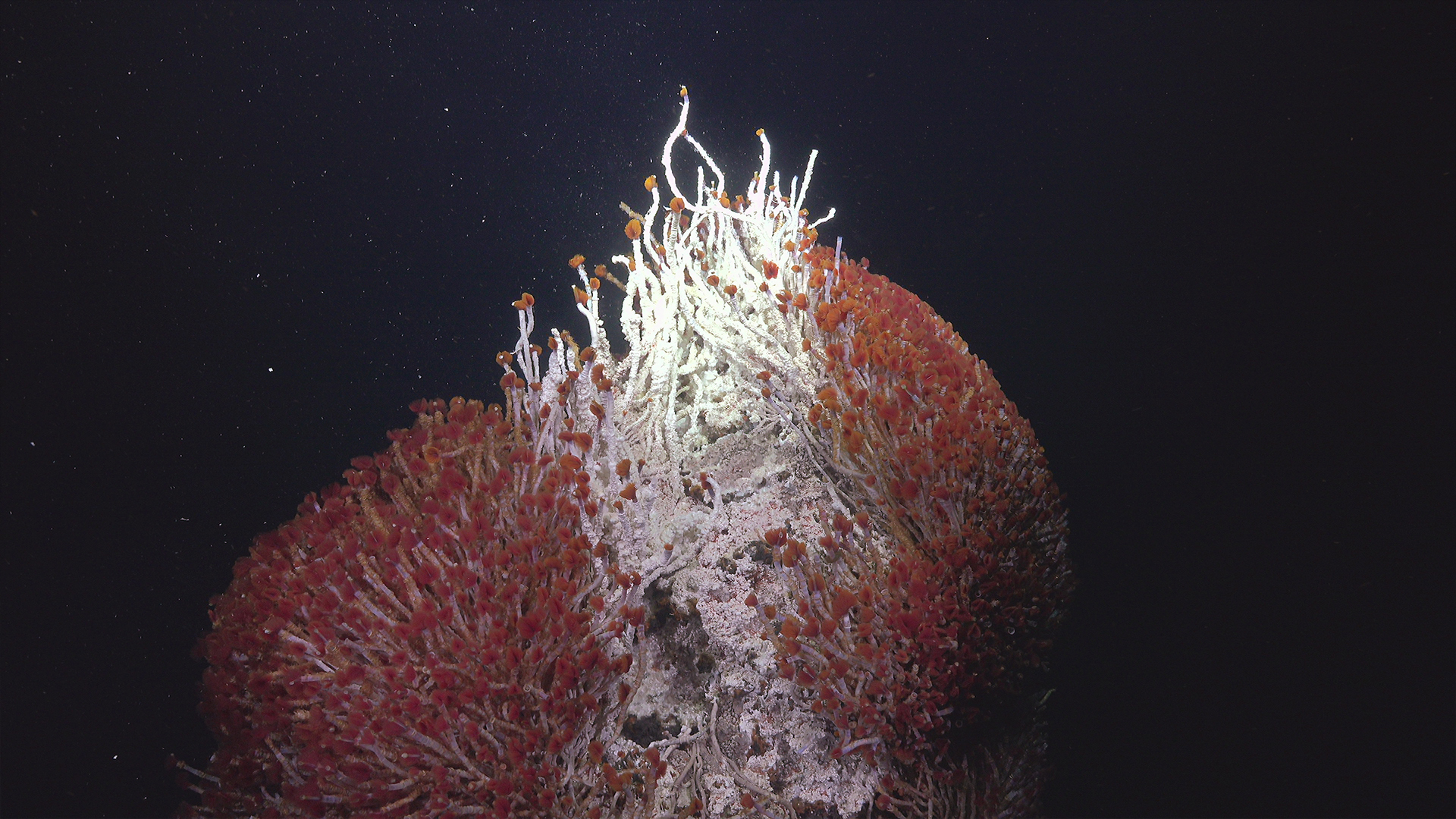Hidden underworld filled with never-before-seen creatures discovered beneath the seafloor
The ecosystem, found beneath hydrothermal vents in the East Pacific Rise, is particularly vulnerable to deep-sea mining.

Beneath an undersea volcano, scientists have discovered a hidden world filled with bizarre creatures.
The first-of-its-kind habitat is teeming with never-before-seen life-forms, including strange species of worms, snails and deep-dwelling octopuses. The ecosystem, nestled beneath hydrothermal vents on the East Pacific Rise off Central America, was found when scientists aboard the research vessel Falkor used a robotic arm to scrape away layers of seafloor.
"On land we have long known of animals living in cavities underground, and in the ocean of animals living in sand and mud, but for the first time, scientists have looked for animals beneath hydrothermal vents," Jyotika Virmani, executive director of the Schmidt Ocean Institute, which spearheaded the expedition to the ecosystem, said in a statement. "This truly remarkable discovery of a new ecosystem, hidden beneath another ecosystem, provides fresh evidence that life exists in incredible places."
Related: Massive expanse of towering hydrothermal vents discovered deep in the Pacific
Scientists first discovered the hydrothermal vents in 1977 while exploring the East Pacific Ridge, a tectonic plate boundary near the Galapagos Islands off the west coast of South America. There, vents shaped like totems of melted wax stand roughly 35 to 40 feet (10 to 12 meters) tall and gush hot, mineral-rich water into the oceans.
Despite the extreme temperatures around the vents — up to 694 degrees Fahrenheit (368 degrees Celsius) — scientists found thriving food chains filled with chemosynthetic bacteria, gastropods, crabs and worms sustained by the rich nutrients gushing from the vents.
But until now, no scientist had thought to look beneath the vents.
Sign up for the Live Science daily newsletter now
Get the world’s most fascinating discoveries delivered straight to your inbox.
As part of the mission, scientists used a robotic arm to clear a square of ocean floor and then placed mesh boxes over cracks in the Earth's crust. When the researchers peered inside those boxes later, they discovered a host of animals living beneath the cavities, confirming that the creatures arrived there from beneath the seafloor.
One animal, the giant tube worm (Riftia pachyptila), was of particular interest to the researchers. Few of the animal's young are seen above the vents, leading scientists to suspect that the larvae hitch a ride inside subsea volcanic fluids to reach new habitats.
"Our understanding of animal life at deep-sea hydrothermal vents has greatly expanded with this discovery," Monika Bright, an ecologist at the University of Vienna who worked on the mission, said in the statement. "Two dynamic vent habitats exist. Vent animals above and below the surface thrive together in unison, depending on vent fluid from below and oxygen in the seawater from above."
The researchers, who will publish their findings later this year, will continue studying this fragile and mysterious ecosystem, which is considered vulnerable to the effects of deep-sea mining operations planned in the Pacific Ocean.
"The discoveries made on each Schmidt Ocean Institute expedition reinforce the urgency of fully exploring our ocean so we know what exists in the deep sea," Wendy Schmidt, president and co-founder of the Schmidt Ocean Institute, said in the statement. "The discovery of new creatures, landscapes, and now, an entirely new ecosystem underscores just how much we have yet to discover about our Ocean — and how important it is to protect what we don't yet know or understand."

Ben Turner is a U.K. based staff writer at Live Science. He covers physics and astronomy, among other topics like tech and climate change. He graduated from University College London with a degree in particle physics before training as a journalist. When he's not writing, Ben enjoys reading literature, playing the guitar and embarrassing himself with chess.









